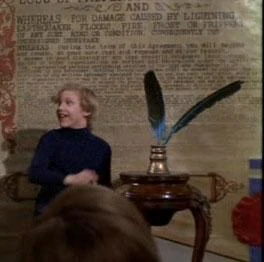Ask Dr. Wobs: How do you get people to read to the bottom?

I recently received this query from a loyal reader:
In an era where merit is accorded on the basis of social media ‘likes’ and increasing numbers of TLTR [too longer to read] messages I would like to (read) your comments on how to get the audience to ‘read to the bottom.’
Good question.
Is “read to the bottom” your true objective?
People’s attention spans are short — they spend only 36 seconds on the average news article, according to Chartbeat. Our inboxes are flooded and we’re besieged by social media content. So naturally, it’s harder to get people to read whole articles, emails, blog posts, and the like.
Recall the Iron Imperative: you must treat the reader’s time as more valuable than your own. If you can deliver the important message in just the title, do it. That saves time. And if you can deliver the important message in the lede (the first few sentences), do it. That saves time, too.
You won’t accomplish your goal of getting people to read to the end. But you will help the reader accomplish their goal of learning what is important.
Don’t write an article when you could, essentially, write a tweet and accomplish the same goal.
Not satisfied? Well, I know three ways to get people to keep reading what you write, as I explain in the next three sections. But only two of them are honorable.
Be more readable
What if your message is too complex or detailed to deliver in a tweet? After all, we are writers, not slogan slingers.
If your message requires more detail, there are still many strategies that will encourage people to read more of any piece that you write. Here’s a short list:
- Write shorter. People won’t give up so easily if the piece is half as long. In my original business reader survey, “too long” was the main complaint about content. So purge repetition, shorten sentences, cut nonessential content and write shorter pieces.
- Break it up. People are more likely to read five short article sections than one article of the same length. So use subheads to divide what you write up into pieces. Similarly, you can make the piece appear more inviting if you include bullets, tables, graphics, quoted materials, links, and other content formats that appear easier to consume. This applies to emails, too: you can put subheads, bullet lists, and graphics into emails just as you can in any other content.
- Use links to deliver nonessential content. Use an attachment to list the detailed instructions. Or link to other documents you already wrote. That’s how to deliver detailed content to people who need it without burdening every reader with looking at it.
Entertain
There a second strategy you can get to encourage people to keep reading: make reading enjoyable.
Include jokes or witticisms. Vary sentence length. End sections with inviting transitions, for example, “Now you know why it’s important to do xxx — but how can you actually do it?”
Use structure to make promises. For example, “Well, I know three ways to get people to keep reading what you write, as I explain in the next three sections. But only two of them are honorable.” Then they’ll keep reading until section three.
Clickbait is not the answer
Here’s what I don’t recommend: clickbait. Don’t keep promising something and then fail to deliver it until the end (if at all). Clickbait content has trained us to hate that, and people are too smart to fall for it now.
The world of content is cold, cruel, and crowded. (Say that three times fast!) You have to work a lot harder to retain people’s attention. But that’s why professional writers still have jobs — because we’re more resourceful and interesting than AI text generators.
Jim Klobuchar, the late father of U.S. Senator Amy Klobuchar, wrote a column for the Minneapolis Tribune, later the combined Star Tribune. The topic was whatever he wanted it to be, and he would often lead with a provocative statement or question. That was the hook.
He would end each paragraph with just enough of a cliffhanger that the voice in the back of my mind would ask “and then what?” My attention would be pulled all the way through the column. He also regularly rewarded readers with a kind of punch line tying the last paragraph, generally a single sentence, to the provocative lead-in. If the opening line got me, I was going to read it all, and get a reward at the end worthy of a thoughtful nod of the head or an appreciative chuckle.
You have done something similar—building a loyal readership by delivering content worth our time and attention. so I’d add one thing to your advice here: Consistently give readers something of value and they’ll be glad to see what you write next, no matter how long.